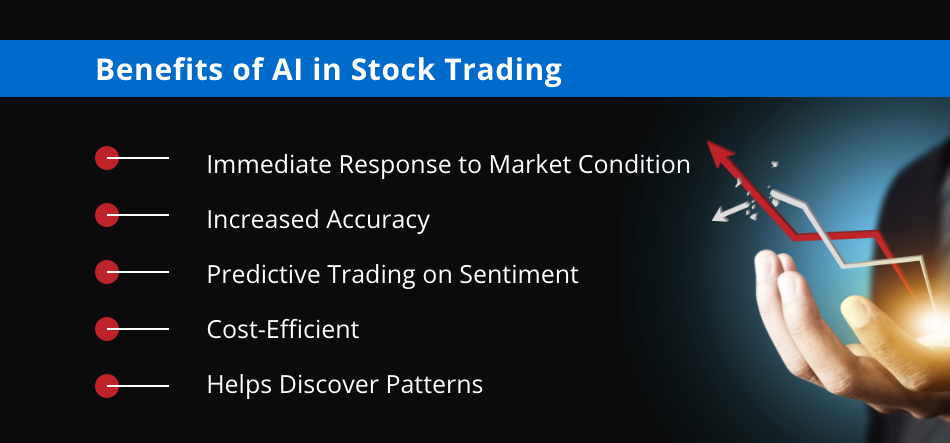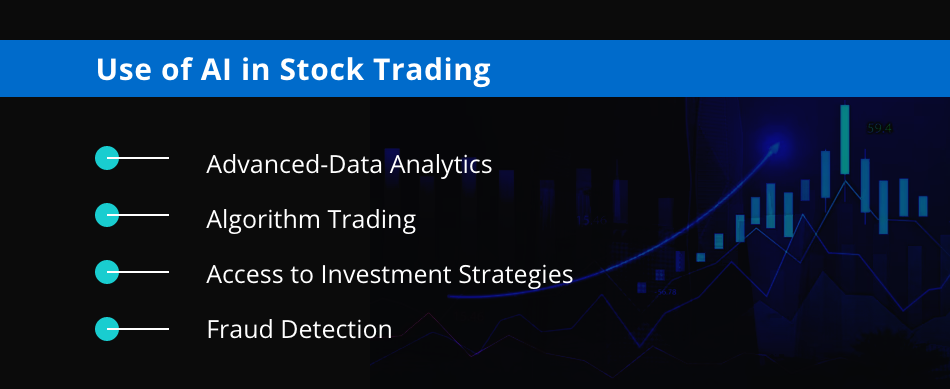20 Handy Advice For Deciding On AI Stock Picker Platform Sites
20 Handy Advice For Deciding On AI Stock Picker Platform Sites
Blog Article
Top 10 Tips To Evaluate The Customer Support Of Ai Stock Predicting/Analyzing Trading Platforms
Customer support is a critical aspect when selecting the best AI trading platform for predicting or analyzing stocks. Support that is reliable and prompt can be a major factor in solving issues, increasing the use of the platform, and providing an enjoyable trading experience. Here are the top ten tips for evaluating the quality of customer support offered by these platforms.
1. Review the availability of support
24/7 support: Check if the platform has 24/7 support, particularly important for global market and real-time trade.
Business hours If there isn't 24/7 support it is important to ensure that support is in place at the time you need it.
Coverage for holidays: Check for support during holidays to determine if you receive assistance during weekends, holidays, and market closures.
2. Test Response Times
Initial response Try the support staff by sending an uncomplicated test question.
Resolution time: Calculate the length of time required to resolve a problem.
Live chat is available Make sure you test the response speed and efficiency.
3. Examine Options for Support
Multichannel Support: The system should provide support through a variety of channels (e.g. live chat, email and telephone).
Check the availability and reliability of the support channels you prefer (e.g. chat or phone).
Self-service solutions: For quick solutions to problems, check out comprehensive knowledge bases, FAQs or community forums.
4. Evaluation of Quality of Support
Expertise - Ensure that the support staff you employ are proficient in issues with platforms, trading, and technical problems.
Problem-solving: Assess whether the agents are able to effectively solve difficult issues, or escalate them as appropriate.
Professionalism. Check that support interactions were friendly, professional and efficient.
5. Find Dedicated Client Managers
Premium support: Check to determine if customers of premium plans, or who are institutional users, have access to a specific account manager.
Check to see whether the account manager can provide tailored support, proactive guidance or help with a proactive approach.
Building relationships - Make sure whether account managers can be contactable and build long-term relationships with users.
Review Documentation
Knowledge base - Ensure that the platform provides an organized and searchable knowledge base with tutorials. Guides, and suggestions for troubleshooting.
Video tutorials Check if you can find video tutorials on the platform.
API documentation. API documentation is important for developers.
7. Assess community and peer support
User forums: See whether the platform hosts an active user community or forum where users can offer suggestions and solutions.
Find social media forums that are not official (e.g. Reddit or Facebook). These groups allow users to speak about the platform.
Community engagement: Make sure that the platform team is actively participating in the forums and discussions of the community.
8. Evaluate Escalation Processes
Issue escalation - Make sure that there's a defined procedure for escalating concerns that are not resolved to higher management or support levels.
Follow-up: Check if support is following up to make sure that the issue has been resolved.
Feedback loop: Ensure that the platform is collecting feedback from users to help enhance its support offerings.
9. Test Support in Critical situations
Market volatility: Contact support during times of high volatility to assess their responsiveness under stress.
Simulate a tech problem (e.g. the issue of login or unclear data) to observe the way tech support responds.
Trade execution - Make sure that support is available to help with urgent concerns with trade (e.g. orders not being executed, delays in execution).
Review User Feedback to find Support
Online reviews: Check out user reviews from platforms like copyright or G2 to get a feel for the overall satisfaction level with the customer service.
Find reviews and case studies which highlight positive experiences.
Check how the platform responds to negative feedback and complaints.
Bonus Tips
Support during the trial period: You can test the support of the platform using the demo or trial period.
Language support: See whether you can receive support in your language of choice if you don't know English.
Training and onboarding - Check whether your platform has onboarding or training sessions to help users start their journey.
You can assess customer support on AI stock predicting/analyzing platforms by following these suggestions. By doing so, you will be able select a platform that offers quick, reliable and efficient assistance. Customer support that is responsive and efficient can enhance your overall experience. Read the recommended ai for stock trading blog for blog tips including using ai to trade stocks, trading with ai, chart ai trading assistant, ai investing, investing ai, ai stock market, incite, best ai trading software, ai stock trading, using ai to trade stocks and more.
Top 10 Tips For Evaluating The Speed And Latency Of Ai Stock Predicting/Analyzing Trading Platforms
Latency and speed are important elements when it comes to considering AI stocks and analyzing trading platforms, especially for active traders, algorithmic traders, as well as high-frequency traders. Milliseconds could affect trading execution and profit. These are the top 10 tips for evaluating the speed and latency of these platforms:
1. Evaluate the real-time data feeds
Data delivery time: The platform should deliver real-time, accurate data within a short period of time (e.g. with sub-millisecond delay).
Data source proximity – Check to see if your servers of your platform are close to important exchanges. This will cut down on the time for data transmission.
Data compression: Make sure that the platform is using effective data compression to speed data delivery.
2. Test the Trade Execution speed
Processing speed of orders: How quickly the platform processes and executes trades once you've submitted an order.
Direct market access: Check whether the exchange allows direct orders to be sent to the exchange.
Execution Reports: Check if your platform has detailed reports on the execution of orders, as well as timestamps.
3. Examine Platform Response
Speed of the user interface (UI) Find out how fast the user interface of the platform responds to your inputs.
Chart updates - Verify that your charts are up-to-date in real time and without any delays.
Mobile apps' performance If you are using a mobile application, make sure that it's as fast as the desktop version.
4. Check for Low Latency Infrastructure
Server Locations: Make sure that the platform has servers that have low latency, located close to major financial exchanges or hubs.
Co-location service: Discover if your platform offers this option. This lets you host trading algorithms on servers near the exchange.
High-speed networks: Check if the platform uses fiber optic networks with high-speed speeds or technology with low latency.
5. Assess the Backtesting and Simulation speed
Historical processing of data: Find out the speed at which your platform analyzes and processes data from the past.
Simultaneous trade simulation The platform should be capable of simulated live trading with no apparent delay.
Parallel processing: Find out if the platform utilizes parallel processing or distributed computation to speed up calculations.
6. Calculate the API Latency
API response time It is the time at that an API platform responds to requests.
Rate limits: Check whether the API has acceptable rate limits to prevent delays during high-frequency trading.
WebSocket support: Check if the platform uses WebSocket protocols to support real-time, low-latency data streaming.
7. Test Platform Stability When Loaded
High-volume Trading: Play with large volumes of trading scenarios to determine if your platform is stable and responsive.
Test your platform during periods of extreme market volatility.
Test for stress: Check if your platform provides methods for stress testing strategies in extreme conditions.
8. Evaluation of Connectivity and Network
Internet speed demands. Check that your connection is at the minimum speeds recommended for your platform to ensure optimal performance.
Verify connections that are not redundant.
VPN latency. Check to see if you're using VPN. Verify if you are using a VPN to determine if it causes latency.
9. Make sure you are checking for features that speed up your performance.
Pre-trade analysis The platform should offer pre-trade analyses to optimize the order routing and execution speeds.
Smart order routing (SOR) Find out if the platform uses SOR to identify the fastest and most cost-effective execution venues.
Latency monitoring: Determine whether your platform comes with tools that let you analyse and monitor latency in real time.
Benchmarks for User Feedback Review
User reviews: Conduct user research to assess the platform's speed and latency.
Benchmarks from third-party sources Check out independent reviews or benchmarks that compare the performance of the platform versus that of its competitors.
Case studies: Find out if the platform provides case studies or testimonials highlighting the platform's low-latency capabilities.
Bonus Tips
Use the free trial or demo period to evaluate your platform's speed and latency under real-world conditions.
Customer Support: Verify whether the platform offers assistance with issues related to latency, or optimize.
Hardware requirements. Verify whether the system is compatible with a specific type of hardware for example, high-performance computers.
The following tips can assist you in evaluating the speed of AI trading platforms that predict/analyze price fluctuations in stocks. You will be able pick a trading platform that is the most suitable for the requirements of your trading and eliminates delay. The need for low latency is vital for algorithmic and high-frequency traders. Even small delays can have a huge impact on profits. Read the best here for best ai penny stocks for blog info including ai share trading, invest ai, best ai for stock trading, trading ai tool, how to use ai for copyright trading, ai share trading, ai stock price prediction, ai tools for trading, stock trading ai, chart analysis ai and more.